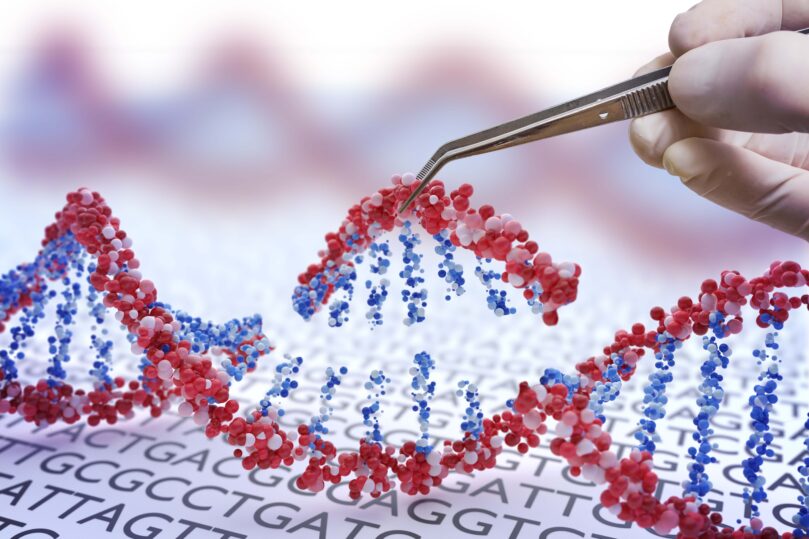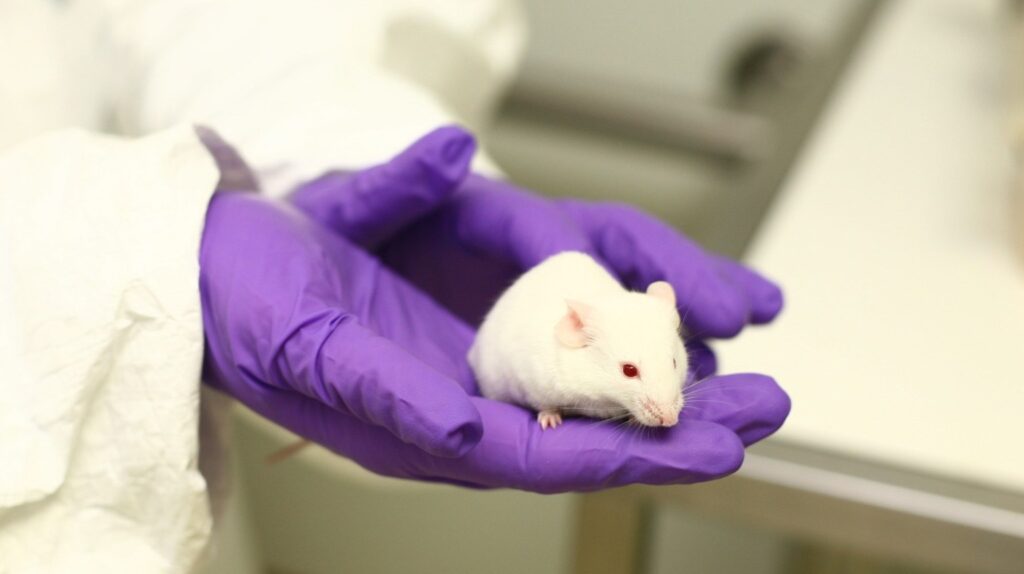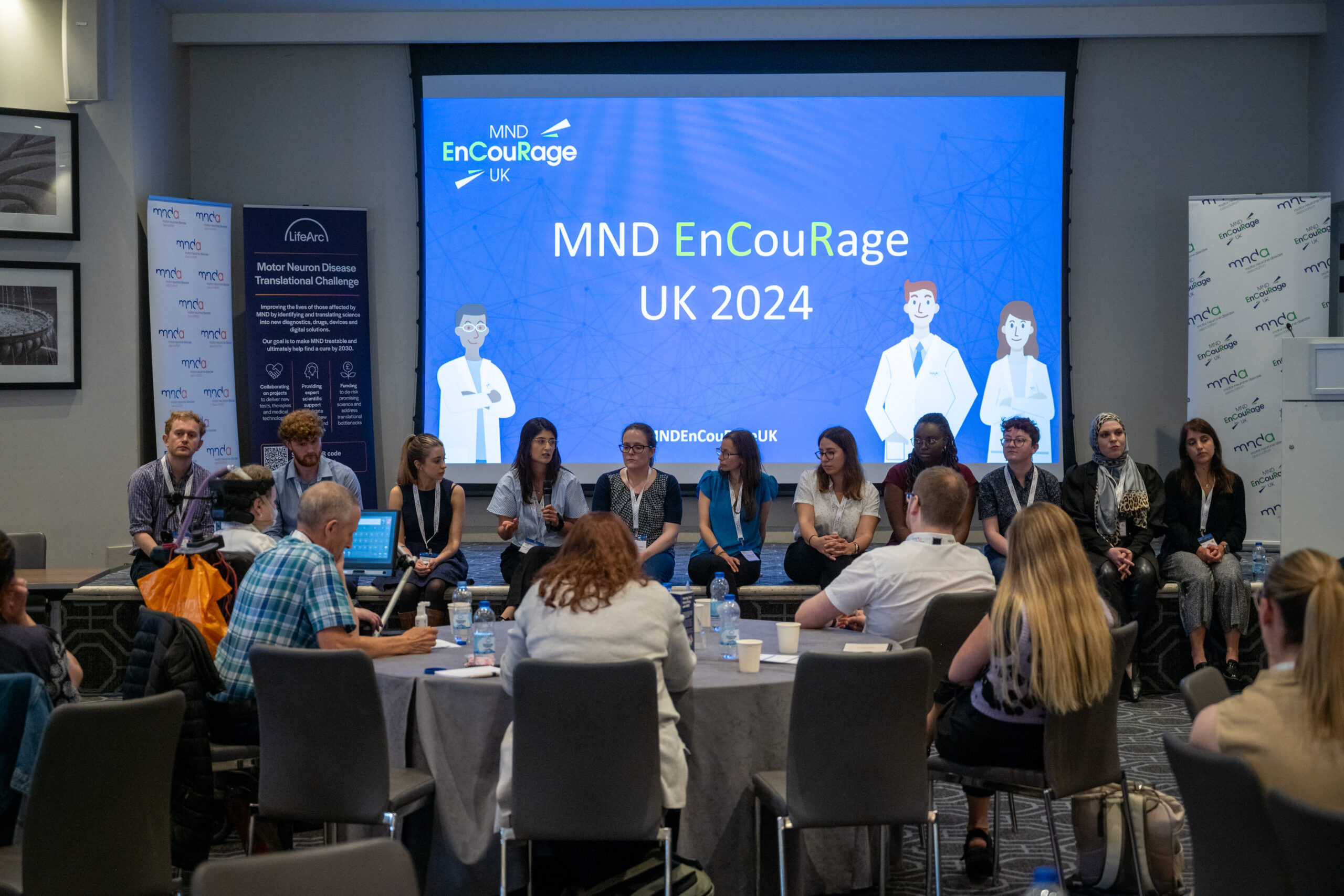
As part of our Symposium Spotlight series, we’re looking back on some of the research presented at the 32nd International Symposium on ALS/MND. This blog takes a closer look at the Stephen Hawking Memorial Lecture (supported by The Stephen Hawking Foundation) which was presented by Professor Jennifer Doudna, a joint Nobel Prize winner for her work on developing the gene-editing technology CRISPPR- Cas9.

The Stephen Hawking Memorial Lecture is an important part of the Symposium, as it enables an influential researcher who is outside the immediate MND field to discuss their cutting-edge research, which could be relevant for those working on MND. The aim of this is to get MND researchers to think outside the box and collaborate with others, which will hopefully help to generate new ideas for MND research.
Winning a Nobel Prize
Professor Doudna and Professor Charpentier were announced as joint winners of the Nobel Prize in Chemistry for 2020, making them the first pair of women to share the award. Professor Emmanuelle Charpentier, a microbiologist studying CRISPR in bacteria, and Professor Doudna, a biochemist interested in CRISPR and RNA, met at a research conference in Puerto Rico. They quickly decided to work together to recreate the CRISPR-Cas9 process in a test tube and simplify the components so that they were easier to use in laboratories. In 2012, the pair published a paper which demonstrated that Cas9 could be reprogrammed to recognise and cut at a specific location within any DNA. It was this work that highlighted the potential uses of CRISPR-Cas9 and led to it being used in research across the globe.
In her talk, Professor Doudna discussed how CRISPR-Cas9 can be used to re-write the DNA in cells and how it may be developed to enable CRISPR to be used effectively in the medicine, agriculture and the pharmaceutical industry and more. CRISPR (Clustered Regularly Interspaced Short Palindromic Repeats), arguably one of the greatest scientific discoveries of the 21st century so far, can be used to alter the genetic sequence within a cell. The CRISPR system includes a protein called Cas9 which can locate and target a specific section of DNA acting like a pair of precise molecular scissors. The Cas9 protein can be programmed to recognise a particular sequence of DNA and cut the cell’s DNA at that location. This means that it could be used to remove and correct disease causing mutations in the DNA or to insert a specific disease associated gene mutation into a cell to learn more about how this DNA change leads to the disease.
Work to develop CRISPR for MND research has been ongoing for a number of years and over the past couple of years there have been some exciting advances made in this area. Since CRISPR isn’t a new topic on the blog, we won’t be going into the details of CRISPR but you can find this information in a previous blog.
Using CRISPR- Cas9 in to make MND models
CRISPR has dramatically improved the process of gene editing in the laboratory to enable researchers to make cell and animal models of disease quicker and more easily than before. Previously, genetic engineering was a very long and complex process which required access to specialist equipment but with CRISPR researchers can quickly make specific changes to exact locations within a gene, meaning that animal and cell models of disease can be created which more accurately reflect gene changes associated with the development of the disease in humans. Accurate models of the disease are essential in enabling scientists to better understand the underlying mechanisms that drive disease and how gene mutations play a role in this.
In recent years, CRISPR has been used to successfully create new disease models of MND. In a previous blog we have already described a mouse model of MND, in which CRISPR was used to insert a specific mutation in the TDP-43 gene at a very precise location. The mouse model was able to provide researchers with more insights into the mechanisms behind the disease and how the gene mutation leads to the onset of MND in humans.
RELATED TOPIC
Blog | 23 March 2018 | Nick Cole
Mice and Marbles: A CRISPR Model of Motor Neurone Disease
In February 2022, a group of researchers from Zhengzhou University in China published a paper on how they used CRISPR to generate stem cells which include a gene mutation in the Fused in Sarcoma (FUS) gene. This gene is used to produce the FUS protein and mutations in it are associated with the development of MND in some people with the disease. CRISPR technology enabled the researchers to make a very precise change to the FUS gene in the stem cells at a defined location. The particular change made to the FUS gene in these stem cells stopped the production of the FUS protein which reflects the loss of function of the protein seen in humans with the disease. Using the published method, these stem cells can be generated by other researchers and used to advance current understanding of how the loss of function of the FUS protein might contribute to damage to motor neurons in MND.
Using CRISPR to develop potential therapies for MND
As well as being used to produce models of disease, CRISPR has the potential to be used in a therapeutic way. Due to the many genes involved in MND, CRISPR might prove to be a useful therapeutic strategy for the disease as it may enable mutations in MND associated genes to be removed or corrected or the action of the gene may be blocked to reduce the disease-associated effects.
CRISPR technology has continued to be developed over the last few years which has led to the discovery of new CRISPR systems, including a system called CRISPR-Cas13. Using CRISPR-Cas13 has been suggested to have some advantages over Cas9, as using Cas9 can sometimes result in changes to the DNA in areas other than the target location.
What is the difference between CRISPR-Cas9 and CRISPR-Cas13?
Cas13 acts in a very similar way to Cas9, with one of the few differences being that Cas13 recognises RNA instead of DNA (RNA is the photocopy of DNA which is used to make proteins). This means that Cas13 can’t be used to edit the code within our DNA, but can be used to target a specific piece of RNA to stop a protein from being made. Cas13 can be programmed, like Cas9, to recognise specific sequences of RNA, and the RNA is then destroyed before the protein can be made.
A team of researchers from the University of Illinois have recently studied how CRISPR-Cas13 can be used to silence the activity of the SOD1 gene that contains mutations associated with MND. They were able to programme a subtype of Cas13 to recognise and bind to a specific sequence in the SOD1 RNA, which initiates the destruction of the RNA before the SOD1 protein can be made. This proved to be effective at reducing the amount of SOD1 RNA in cell models of the disease. The team then decided to test the Cas13 subtype in a mouse model of SOD1-MND. They found that mice who were given the CRISPR-Cas13 subtype had slower disease progression compared to control mice and that they also performed better on motor function tests. The researchers also examined tissue from the mice to see how effective the Cas13 subtype was at reducing levels of SOD1 RNA and they observed a reduction in SOD1 RNA levels of around 65% in spinal cord tissue. The results, which were recently published, suggest that this Cas13 subtype shows some therapeutic benefit in mouse models of MND. Further studies will be needed to test the efficacy of this strategy over a longer period to test any potential long-term effects of the CRISPR-Cas13 treatment.
CRISPR technology has advanced rapidly since the discovery of its applications in gene editing and its use in MND research has increased over the last decade. It has the potential to be used to treat and prevent many different genetic diseases in the future, including MND. For now though, the development of CRISPR continues and further work is needed before therapeutic strategies using this technology can reach clinical trials in MND.
To find out more about the research presented at the 32nd International Symposium on ALS/MND, please see our Symposium Blogathon or published online abstracts.
We would like to thank the Stephen Hawking Foundation for their support of the Stephen Hawking Memorial Lecture, which opens the International Symposium on ALS/MND.







